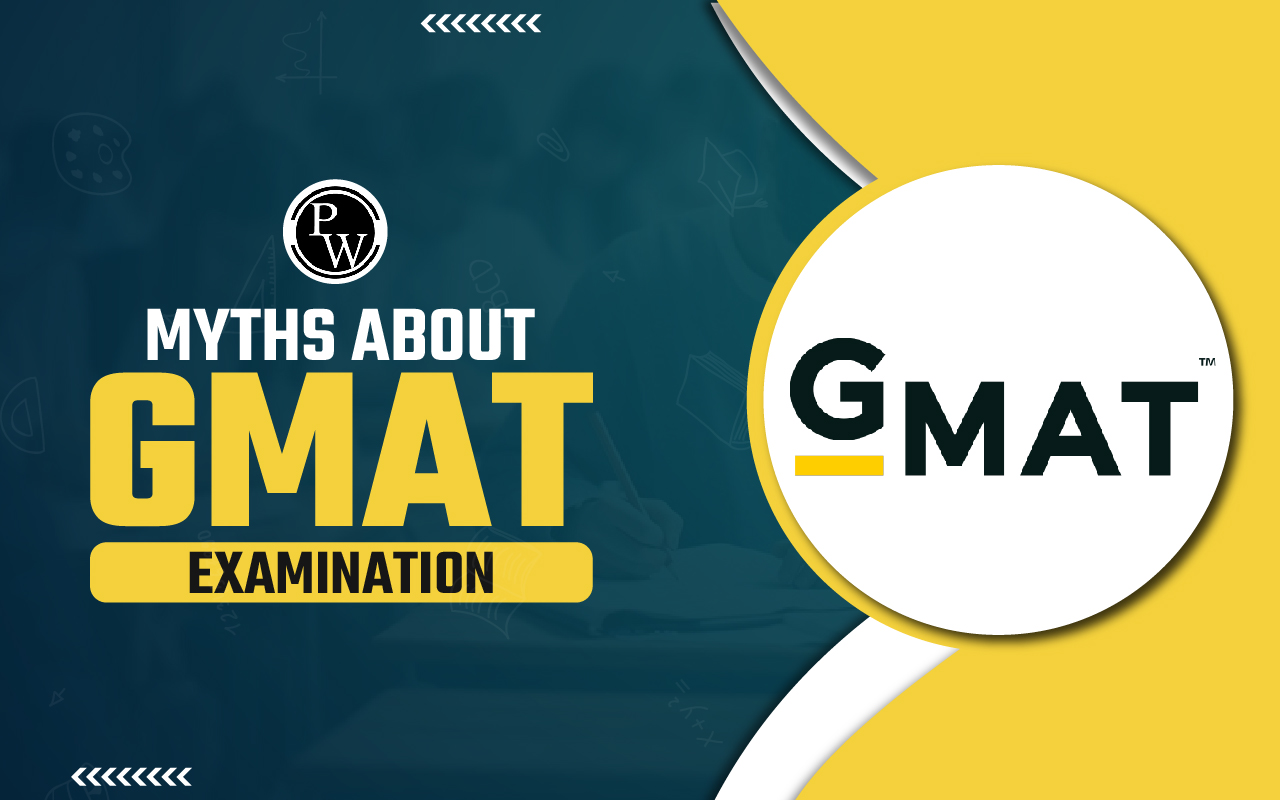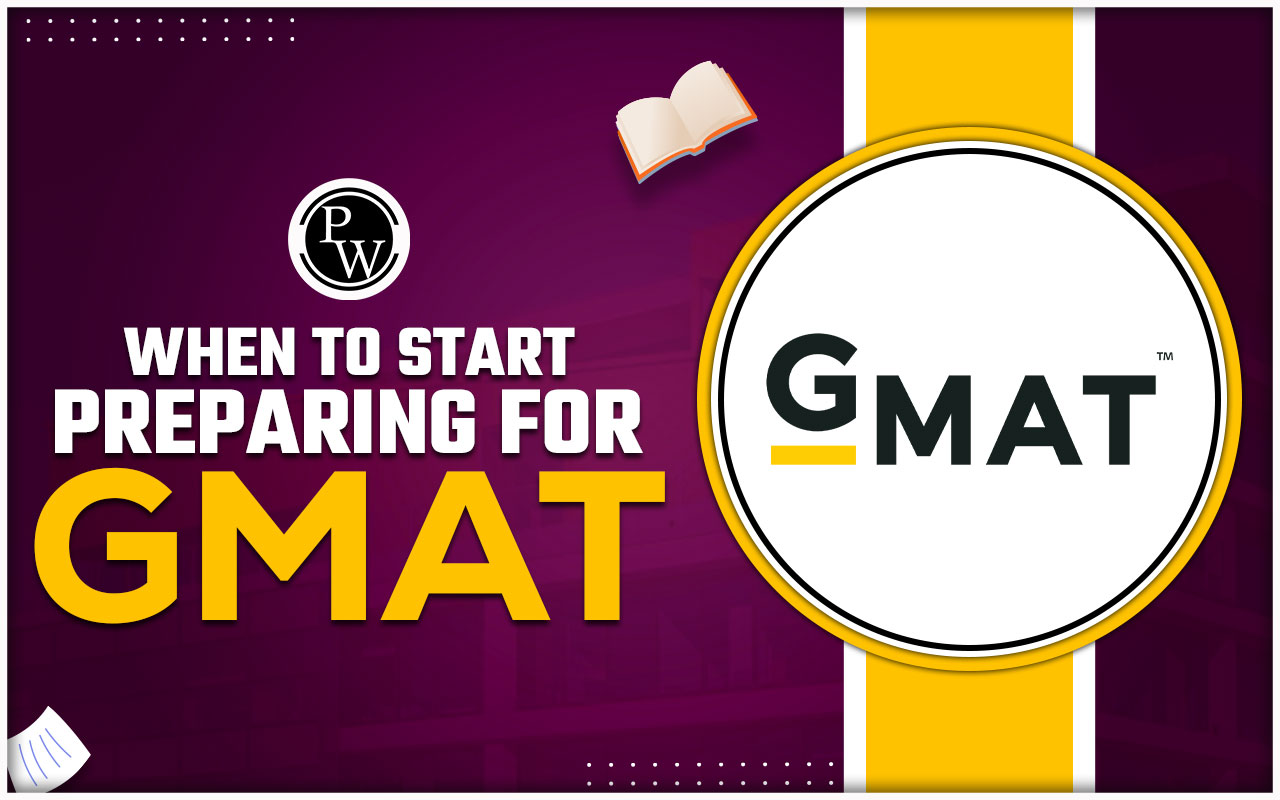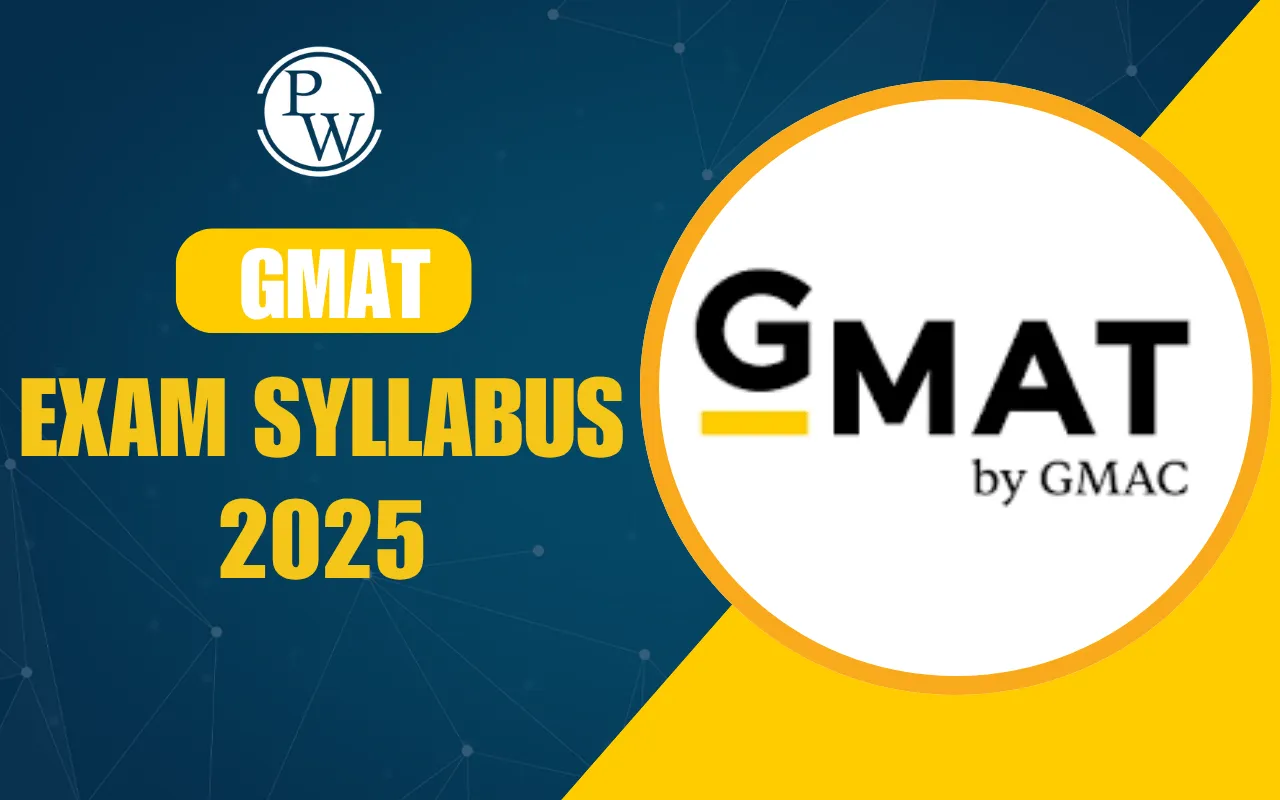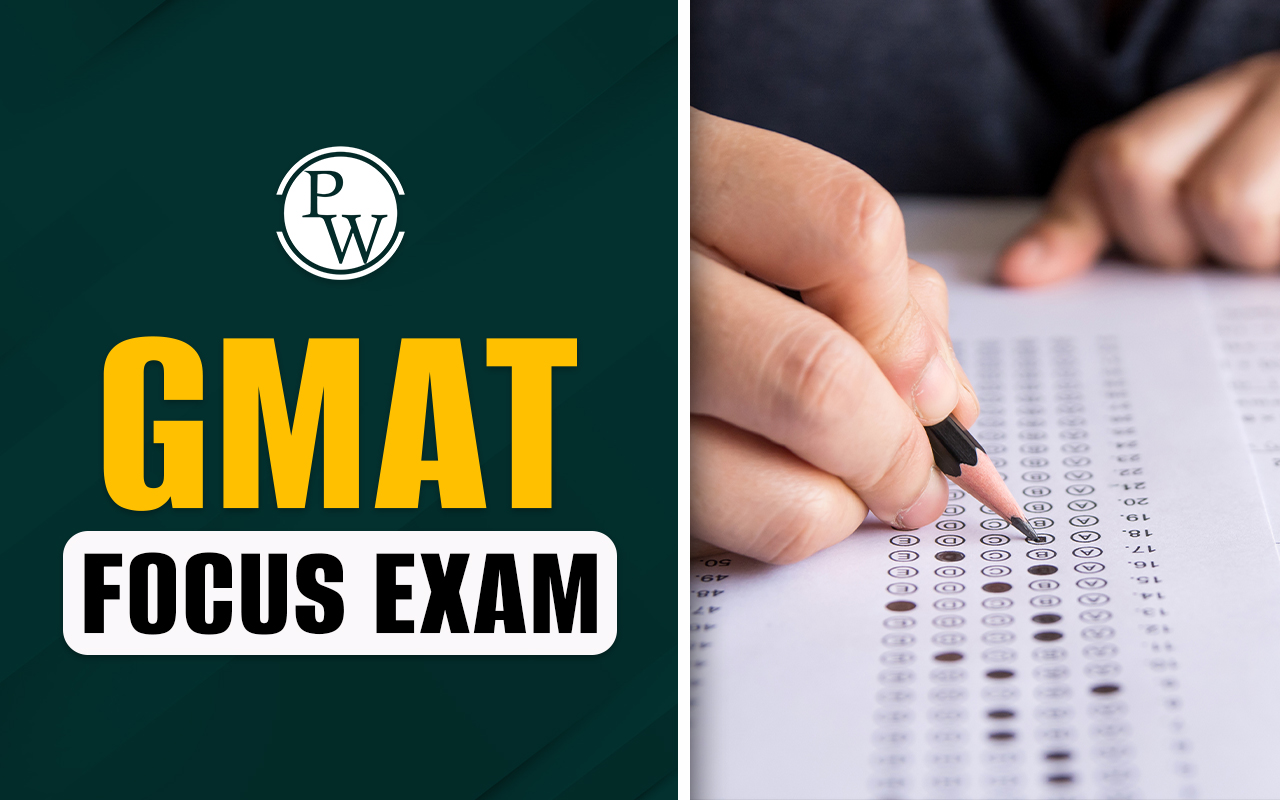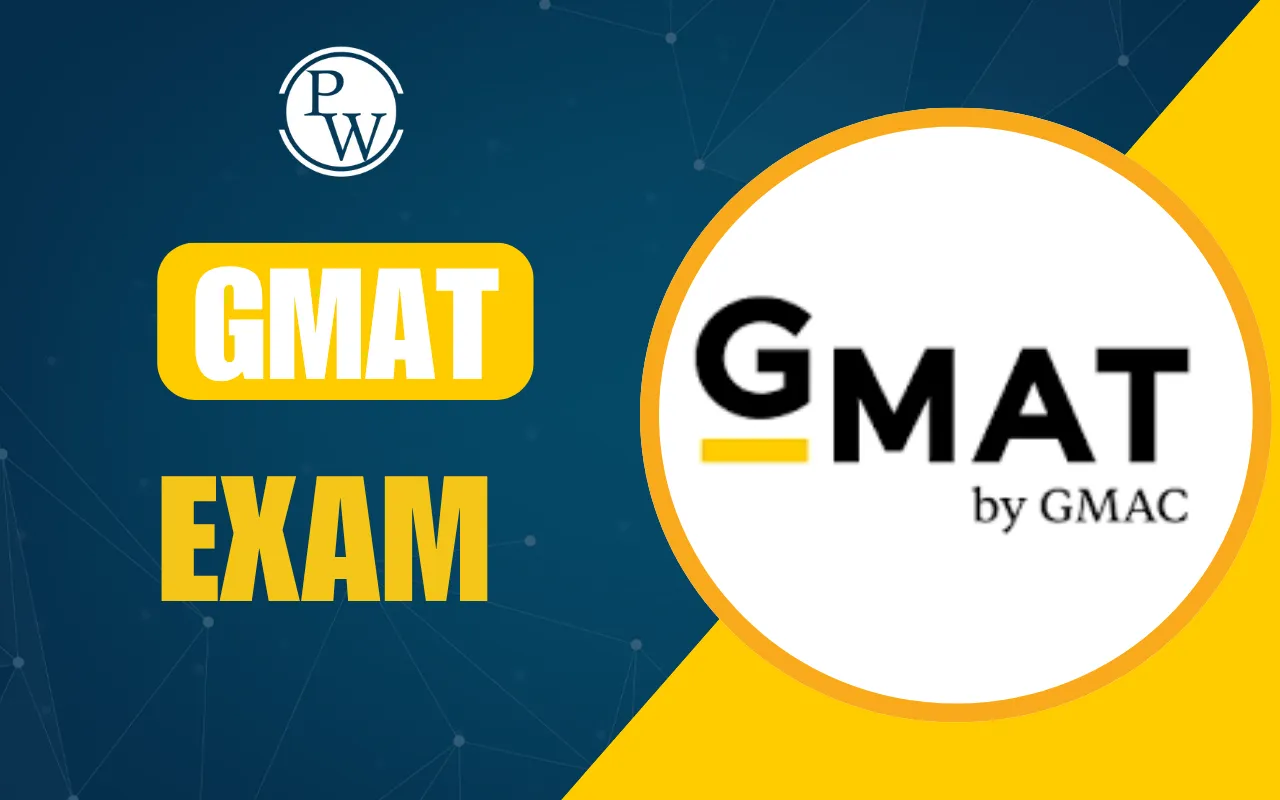
GMAT Exam Pattern 2024: Before beginning your preparation for any exam, it's crucial to understand its format and syllabus. The GMAT Exam Pattern consists of 80 questions distributed across 4 sections. These sections include both objective and subjective questions.
Overall, the GMAT pattern comprises 80 questions divided into four sections: Analytical Writing Assessment (1 Essay in 30 Minutes), Integrated Reasoning (12 Questions in 30 Minutes), Quantitative Reasoning (31 Questions in 62 Minutes), and Verbal Reasoning (36 Questions in 65 Minutes). Note: A candidate has the option to take two ‘8-minute breaks’ during the GMAT exam.GMAT Focus Edition Exam Pattern 2024
The GMAT Focus Edition exam is the new version of the GMAT exam, which is set to become available starting from February 1, 2024. This new format is shorter in duration, lasting 1 hour and 45 minutes, and consists of three sections: Verbal, Quantitative, and Data Insights. The total number of questions in the GMAT Focus Edition exam is 64, with 21 questions in the Quantitative Reasoning section, 23 questions in the Verbal Reasoning section, and 20 questions in the Data Insights section. Note: The Data Insights section is a new addition to the GMAT exam and focuses on data analysis skills. The GMAT Focus Edition exam does not include an Analytical Writing Assessment (essay) section, unlike the current GMAT exam. The exam is designed to test skills that are highly important to business and management programs, such as critical reasoning, problem-solving abilities, and data sufficiency, logic, and analysis skills that are vital to real-world business and management success.| GMAT Focus Edition Exam Pattern 2024 | |
| Exam Component | GMAT Focus Edition |
| Exam Version | New version of GMAT |
| Availability | Starting from February 1, 2024 |
| Duration | 1 hour and 45 minutes |
| Sections | Verbal, Quantitative, Data Insights |
| Total Number of Questions | 64 |
| Quantitative Reasoning | 21 questions |
| Verbal Reasoning | 23 questions |
| Data Insights | 20 questions |
| Analytical Writing Assessment | Not included |
| Focus | Skills important to business and management programs: critical reasoning, problem-solving, data analysis, logic, etc. |
GMAT Pattern 2024 Latest Update
GMAC has introduced the GMAT Focus Edition. The syllabus and pattern of the GMAT Focus Edition differ from the current version of the GMAT exam. Below is the table detailing the GMAT Focus Edition pattern for 2024:| GMAT Pattern 2024 Latest Update | |||
| GMAT Focus Edition Section | Number of Questions | Time | GMAT Focus Edition Score Range |
| Quantitative Reasoning (QR) | 21 Questions | 45 Minutes | 60-90 (1-point Increment) |
| Verbal Reasoning (VR) | 23 Questions | 45 Minutes | 60-90 (1-point Increment) |
| Data Insights (DI) | 20 Questions | 45 Minutes | 60-90 (1-point Increment) |
| Total | 64 Questions | 2 Hours + 15 Minutes | 205-805 (10-point Increment) |
| Breaks | - | 1 Optional Break of 10 Minutes | - |
GMAT Exam Pattern 2024
Before starting to prepare for the GMAT 2024 exam, students need to know the structure of the GMAT test. The GMAT exam takes 3 hours and 7 minutes to finish, and it's taken on a computer in English. Scores on the GMAT range from 200 to 800. Each section of the GMAT has a time limit, which varies. Additionally, candidates have some control over how they take the test and can choose from three different combinations.- The Analytical Writing Assessment (AWA) section of the GMAT is a 30-minute essay where you analyze an argument.
- The Integrated Reasoning (IR) section contains 12 questions of various types, to be answered in 30 minutes.
- Scores from the AWA and IR sections don't factor into the 200-800 GMAT score.
| GMAT Exam Section | No. of Questions/ Time Limit | GMAT Question Type | GMAT Score Range |
| Analytical Writing Assessment | 1 Topic (30 minutes) | Analysis of an Argument | 0-6 (0.5-point increments) |
| Integrated Reasoning | 12 questions (30 minutes) |
|
1-8 (1-point increments) |
| Quantitative Reasoning | 31 questions (62 minutes) |
|
6-51 (1-point increments) |
| Verbal Reasoning | 36 questions (65 minutes) |
|
6-51 (1-point increments) |
| Total | 80 questions (3 hours 7 minutes) | - | 200 - 800 |
Analytical Writing Assessment for GMAT 2024
This part of the exam evaluates how well a candidate can think critically and express their ideas clearly. Candidates need to analyze an argument provided and then write a critique of it. The topics are typically about things that interest many people. This section tests how well candidates can organize their thoughts and use evidence to support their opinions.Integrated Reasoning for GMAT 2024
In this section, candidates must analyze and assess information presented in various formats. The questions in this part of the exam will evaluate both your quantitative and verbal skills.- Multi-source reasoning: In these questions, you need to compare, interpret, or apply information presented in tables, graphs, diagrams, written passages, and other visual formats.
- Table analysis: Here, you'll have to determine statistics, ratios, probabilities, or proportions from a provided spreadsheet-like table.
- Graphics interpretation: This part includes multiple-choice questions based on bar graphs, bubble graphs, and line graphs.
- Two-part analysis: In these questions, you'll need to make decisions about trade-offs, calculate proportions, etc., and choose answers provided in a tabular format.
| Also Read | |
| GMAT Syllabus | GMAT Exam Date |
| GMAT Admit Card | GMAT Full Form |
Verbal Reasoning for GMAT 2024
This part of the test assesses how well candidates understand what they read, evaluate arguments, and fix written material to make it proper English.- Reading comprehension: In these questions, you read a passage of up to 350 words and answer questions about the main idea, supporting details, context, style, tone, and so on.
- Critical reasoning: These questions test your ability to evaluate arguments and come up with or evaluate a plan of action.
- Sentence correction: In these questions, you need to fix mistakes in sentences related to agreement, grammar, logical structure, parallelism, idioms, verb forms, and how the sentences are put together.
GMAT Pattern 2024: Test Centre and Online GMAT
The table below compares the GMAT pattern for the 2024 exam when taken at a test center and when taken online.| Head | GMAT Pattern for Test Centre | GMAT Pattern for Online Exam |
|---|---|---|
| Pattern & Sections | Quantitative Reasoning: 31 questions in 62 minutes | Quantitative Reasoning: 31 questions in 62 minutes |
| Verbal Reasoning: 36 questions in 65 minutes | Verbal Reasoning: 36 questions in 65 minutes | |
| Integrated Reasoning: 12 questions in 30 minutes | Integrated Reasoning: 12 questions in 30 minutes | |
| Analytical Writing Assessment: 1 question in 30 minutes | Analytical Writing Assessment: 1 question in 30 minutes | |
| Scoring | Quantitative Reasoning: 6-51 | Quantitative Reasoning: 6-51 |
| Verbal Reasoning: 6-51 | Verbal Reasoning: 6-51 | |
| Integrated Reasoning: 1-8 | Integrated Reasoning: 1-8 | |
| Analytical Writing Assessment: 0-6 | Analytical Writing Assessment: 0-6 | |
| Total Duration | 3 hours + 7 minutes | 3 hours + 7 minutes |
| Breaks | 2 breaks of 8 minutes each (optional) | 2 breaks of 8 minutes each (optional) |
| GMAT Exam Fees in India | $275 | $300 |
| Attempts | 5 attempts in 12 months | 5 attempts in 12 months |
| 8 attempts in one’s lifetime | 8 attempts in one’s lifetime | |
| A gap of 16 calendar days between 2 subsequent events | A gap of 16 calendar days between 2 subsequent events | |
| Validity | 5 years | 5 years |
| Score Report Availability | Unofficial: Immediately after the GMAT exam | Unofficial: Immediately after the GMAT exam |
| Official: 7-20 days | Official: 7-20 days | |
| Appointments | 7 days a week | Around the clock |
| Can be booked up to 6 months in advance | Can be booked up to 6 months in advance and up to 24 hours before | |
| the availability of an exam slot | ||
| Scratch Work | 5-page laminated booklet and two dry-erase markers | Physical whiteboard, online whiteboard, or both |
| Score Sending | The first 5 complimentary GMAT score reports will be sent to | The first 5 complimentary GMAT score reports can be sent within |
| institutions that you choose on the day of your GMAT exam | 48 hours of receiving the official score | |
| Additional Score Report | $35 each | $35 each |
GMAT Section Order 2024
In July 2017, GMAC introduced the Select Section Order, which allows students to personalize their GMAT exam experience. This feature gives them the freedom to choose the order of sections they prefer during the exam. Therefore, you have control over your test-taking experience. Now, candidates have the opportunity to choose from three options for the exam’s section order:- Analytical Writing Assessment, Integrated Reasoning, Quantitative, Verbal
- Verbal, Quantitative, Integrated Reasoning, Analytical Writing Assessment
- Quantitative, Verbal, Integrated Reasoning, Analytical Writing Assessment
| GMAT Section Order | ||
| Order 1 | Order 2 | Order 3 |
| Analytical Writing Assessment | Verbal Reasoning | Quantitative Reasoning |
| Integrated Reasoning | ||
| 8-min break (optional) | ||
| Quantitative Reasoning | Quantitative Reasoning | Verbal Reasoning |
| 8-min break (optional) | ||
| Verbal Reasoning | Integrated Reasoning | Integrated Reasoning |
| Analytical Writing Assessment | Analytical Writing Assessment | |
Is GMAT 2024 a Computer Adaptive Test?
The GMAT is a computer-adaptive test conducted almost every day of the year. In the GMAT exam pattern for 2024, each question adjusts its difficulty level based on how well the candidate answers previous questions. This computer-adaptive nature allows the exam to accurately assess a candidate's abilities. For instance, in the verbal reasoning sections, the first question starts at a moderate difficulty level. Depending on whether the candidate answers correctly or not, the difficulty level of subsequent questions adjusts accordingly.- If the candidate answers correctly, the next question will be harder, while an incorrect answer leads to a question of moderate difficulty. This process continues until the section is completed.
GMAT Preparation Tips 2024
As we approach 2024, GMAT test-takers are seeking effective strategies to prepare for the exam. Here are some tips to help you achieve your target score:- Understand the Test Format: The GMAT consists of four sections: analytical writing assessment, integrated reasoning, quantitative, and verbal. Get familiar with the format, types of questions, and how scoring works.
- Create a Study Plan: Make a study plan that fits your schedule and learning style. Allocate time for each section, focusing on areas where you need improvement.
- Use Official GMAT Resources: Utilize resources like the GMAT Official Guide for practice questions, full-length exams, and writing prompts.
- Take Practice Exams: Regularly take practice exams to track your progress and pinpoint areas to work on. This also helps you get comfortable with the test format and time constraints.
- Review Your Mistakes: Analyze your mistakes and understand why you made them. Learning from errors helps you avoid repeating them in the future.
- Join a study group or hire a tutor. Studying with others or getting a tutor can offer extra support and motivation. They may provide insights and strategies you haven't considered.
- Stay Healthy: Maintain a balanced lifestyle with regular exercise, a nutritious diet, and enough sleep. This is vital for staying focused and retaining information.
- Stay Positive and Persistent: The GMAT can be tough, but staying positive and persistent will help you overcome challenges and achieve your goals.
GMAT 2024 Exam Pattern FAQs
What is the GMAT Focus Edition exam?
The GMAT Focus Edition is a new version of the GMAT exam set to launch on February 1, 2024.
How long is the GMAT Focus Edition exam?
The exam lasts for 1 hour and 45 minutes.
What are the sections included in the GMAT Focus Edition exam?
The exam consists of three sections: verbal, quantitative, and data insights.
How many questions are there in each section of the GMAT Focus Edition exam?
There are 21 questions in quantitative reasoning, 23 in verbal reasoning, and 20 in data insight.
Does the GMAT Focus Edition exam include an analytical writing assessment section?
No, it doesn't. The Analytical Writing Assessment section is not included in this version of the exam.
Talk to a counsellorHave doubts? Our support team will be happy to assist you!

Check out these Related Articles
Free Learning Resources
PW Books
Notes (Class 10-12)
PW Study Materials
Notes (Class 6-9)
Ncert Solutions
Govt Exams
Class 6th to 12th Online Courses
Govt Job Exams Courses
UPSC Coaching
Defence Exam Coaching
Gate Exam Coaching
Other Exams
Know about Physics Wallah
Physics Wallah is an Indian edtech platform that provides accessible & comprehensive learning experiences to students from Class 6th to postgraduate level. We also provide extensive NCERT solutions, sample paper, NEET, JEE Mains, BITSAT previous year papers & more such resources to students. Physics Wallah also caters to over 3.5 million registered students and over 78 lakh+ Youtube subscribers with 4.8 rating on its app.
We Stand Out because
We provide students with intensive courses with India’s qualified & experienced faculties & mentors. PW strives to make the learning experience comprehensive and accessible for students of all sections of society. We believe in empowering every single student who couldn't dream of a good career in engineering and medical field earlier.
Our Key Focus Areas
Physics Wallah's main focus is to make the learning experience as economical as possible for all students. With our affordable courses like Lakshya, Udaan and Arjuna and many others, we have been able to provide a platform for lakhs of aspirants. From providing Chemistry, Maths, Physics formula to giving e-books of eminent authors like RD Sharma, RS Aggarwal and Lakhmir Singh, PW focuses on every single student's need for preparation.
What Makes Us Different
Physics Wallah strives to develop a comprehensive pedagogical structure for students, where they get a state-of-the-art learning experience with study material and resources. Apart from catering students preparing for JEE Mains and NEET, PW also provides study material for each state board like Uttar Pradesh, Bihar, and others
Copyright © 2025 Physicswallah Limited All rights reserved.
Get App
